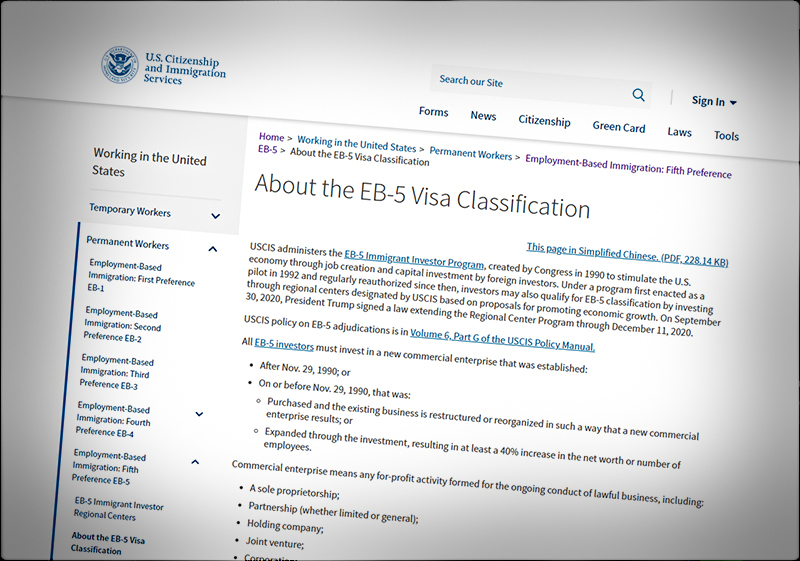
We keep hearing, I think appropriately, that diversity (and equality) are good things; that we should always have a mix of races, nationalities, colors, genders, and definitions of genders. We read, for example, about a university hiring a new vice president for diversity.
If diversity is a good thing, maybe it should apply to immigration categories, such as the EB-5 (immigrant investor) program. But in real life, it does not work that way; the EB-5 program is, along the lines of national origin, probably the least diverse of all the various classes and subcategories in the immigration field.
The EB-5 program is full of corruption of various kinds and on June 30 its congressional authorization lapsed, perhaps never to be revived, as we reported earlier.
The Cato Institute, which is about as open-borders as you can get, informs us that so many Chinese have applied to the EB-5 program that the country of origin ceilings have produced these visa waiting lists, as of March 2020:
- China: 77,931;
- Vietnam: 1,404;
- India: 540; and
- The rest of the world: 0.
In the year or so that has passed since then, the Indian waiting list has disappeared, and the Vietnamese one is about to do so.
The EB-5 program has a ceiling of about 10,000 visas a year, to be given to all the alien members of the families in which one of the parents made a sufficiently large investment in the U.S. That number used to be $500,000, but the Trump administration, agreeing with a proposal made earlier by the Obama administration, raised the ante to $900,000. Again, that sum included visas for all the members of the family, except children over 21.
For some reason, the rest of the world was not very interested in this arrangement, but as Cato has noticed, it went over in a big way with some of the nervous Chinese rich who want to get a second passport; many of these investors want to make sure that their children can live in the U.S. should they chose to do so.
It should be said that the numbers above, though obtained from a reputable source, overstate the extent to which those from Communist China dominate this capitalistic program in the U.S. They do so because they reflect the complex interplay of various forces, which I am not going to try to explain: the huge demand for second passports in China, the 10,000 ceiling for the visas, the country of origin ceilings that go with all immigration programs, and the drop-down, in some years, of visas not used by other immigration categories. EB-5, incidentally, is called that because it is the fifth of the Employment-Based immigration preferences.
A better measure of the still-huge dominance of the Chinese in the program can be seen in the table below; it records the annual awards of EB-5 visas to aliens from Mainland China (people of Chinese origin who live in either Taiwan or Hong Kong are not included in these tallies) and to those from the rest of the world. In recent years the number of Chinese getting these visas has declined, as visas for the Chinese could not be converted quickly to green cards, but the same investments from other nations led to no such delays. The delays for those from China, that used to run more than 10 years, may have dropped to six or seven years.
Visas for Mainland Chinese Applicants
|
|||
|
Fiscal |
Chinese EB-5 Visas |
All EB-5 Visas |
Percentage Chinese |
| 2014 | 9,128 | 10,652 | 85.7% |
| 2015 | 8,156 | 9,764 | 83.5% |
| 2016 | 7,516 | 9,947 | 75.6% |
| 2017 | 7,567 | 10,090 | 75.0% |
| 2018 | 4,642 | 9,602 | 48.3% |
| 2019 | 4,327 | 9,478 | 45.7% |
| 2020* | 1,564 | 3,596 | 43.5% |
| Totals | 42,900 | 63,129 | 68.0% |
|
Source: Center for Immigration Studies calculations based on the * Covid-19 severely reduced the numbers of visas issued in 2020 and 2021. |
|||
The author is grateful to CIS intern Rachel Valdez for her research assistance.
